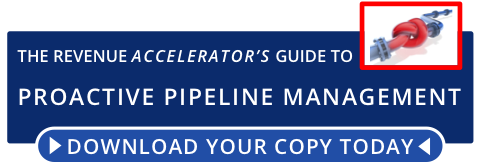Why are so many B2B software demos so bad?
August 5, 2014

Why do so many B2B software demonstrations fail to move the customer to do anything beyond hoping that it might end soon? Why do they so often descend into a serial showcase of irrelevant functionality?
 In short, why are so many demos so bad? I’ve sat through too many truly tedious demonstrations in my time. No doubt you have, as well (if not, you’ve clearly led a charmed and blameless life).
In short, why are so many demos so bad? I’ve sat through too many truly tedious demonstrations in my time. No doubt you have, as well (if not, you’ve clearly led a charmed and blameless life).
So what’s wrong? I think there’s a simple explanation: too many salespeople are demonstrating the wrong things. Let me explain what I mean…
By the way, my comments relate to demonstrating complex, high-value B2B software applications - the sort of solutions that customers buy to help them address important, high-impact business issues. The sort of solutions for which self-paced demos are typically inadequate.
A different type of demo is required
And therein lies the challenge. Assuming that you’re demonstrating to a businessperson, rather than a geek with a salary, your audience probably isn’t half as much interested in your product features or functions as they are in hoping that you will demonstrate how you can help them solve an important business problem.
Rushing through a stream of your finest product features in the hope that the audience can relate a few of them to their business situation isn’t going to help - in fact, it can only serve to make matters worse.
Start with the problem, not the product
But here’s the issue: if your salespeople are to demonstrate how your solution could help your prospect to solve an important business problem, they need to understand the problem in the first place.
They need to understand how the problem arose in the first place, how it was recognised, what the symptoms and consequences are, who else is affected, how the prospect has previously tried to deal with it, and why the prospect needs to solve it now.
Discovery must come before demonstration
In short, they need to do their research ahead of time. They have no hope of demonstrating your “solution” if they haven’t defined the customer’s problem - and they will inevitably be reduced to showcasing a stream of bits on a screen.
That’s why a period of detailed discovery needs to precede the demo - even if it means postponing the demo - and why the demo needs to be about their problems and your proposed solution to them, and not about your product.
Diving straight into the product is almost always a bad idea. Great demos start by setting the scene, by exploring the issues and their consequences, and by seeking agreement about the need for change.
Themes and narratives
Great demos have a theme, and a narrative. They specifically showcase how often a tiny fraction of your solution’s total capabilities can be used in the context of the prospect’s particular business situation. They tell a story. They contrast the before-and-after.
They are supported by anecdotes that illustrate how some of your existing customers have followed a similar path, and highlight the results that can be achieved. They follow the dictum “less is more”. And they avoid overloading the audience with irrelevances.
Prepare - or fail
But there’s an obvious challenge: great demos require preparation. They require a familiarity with the prospect’s problem, and with how others have managed to solve it with your help. They require the discipline to restrict the presentation to what really matters.
They require that you employ smart sales people and a similarly smart supporting cast. They require upfront research. They depend on establishing clear goals and success measures for the demo and agreeing them with the prospect.
They require that you anticipate the interests, concerns and motivations of every member of the prospect team that is attending the demo, and not just what your sponsor or champion wants to see or hear.
More than product familiarity
One last point: your sales people still need to be familiar with the details of your product and the techniques for successfully showing it off. It’s just that product familiarity isn’t enough - you need product familiarity in the customer’s context.
Yes, this all involves hard work. But the alternative - of perpetuating tedious, irrelevant demos that are more likely to turn the prospect off than on - is ultimately much harder.
By the way, if you liked this article, I think you might also like "Steering sales people away from the 3Ds: Demo, Discount, Develop".
Finally: choosing when to do a demo is just one element of implementing a buyer-aligned sales process and just part of implementing proactive pipeline management. To find out more, please request a copy of our latest guide.



Comments